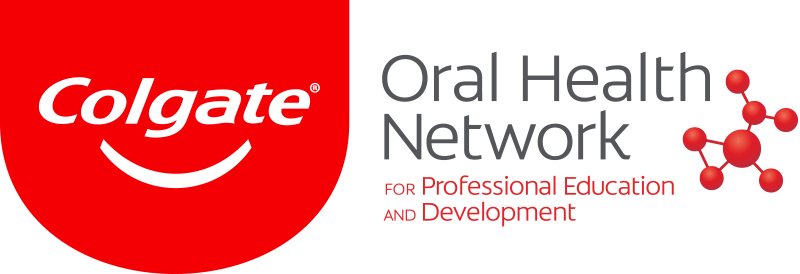Fig. 1: The patient had worn teeth, visible abrasion, erosion and crowding in the mandibular arch.
Fig. 2: Orthodontic treatment was performed to align the full arch.
Fig. 3: A silicone mould was used for the flowable injection technique to restore the teeth with flowable composite. The silicone injection mould had injection channels prepared and was placed to check for proper fit.
Fig. 4: For this case, it was decided to use CLEARFIL MAJESTY ES Flow Low in Shade XW (Kuraray Noritake Dental), the properties and flowability of which made it ideal for a case like this.
Fig. 5: PTFE tape was used to separate the teeth.
Fig. 6: The restoration is completely additive; the teeth are not prepared at all. Total etching of the enamel is the best pretreatment in this situation. K-ETCHANT Syringe (35% phosphoric acid; Kuraray Noritake Dental) was applied for 10 seconds.
Fig. 7: A surgical suction tip was used to carefully remove the phosphoric acid gel and protect the isolations on the teeth, followed by rinsing off completely with water in the usual manner.
Fig. 8: Each tooth was gently air-dried for 10 seconds. CLEARFIL Universal Bond Quick was applied with a rubbing motion without additional waiting time, followed by drying of the treated surfaces by gentle blowing of air for more than 5 seconds until the bonding no longer moved.
Fig. 9: Each bonded tooth was light-polymerised for 10 seconds.
Fig. 10: Using the “Treat one, skip one” protocol, several teeth were restored simultaneously by injecting CLEARFIL MAJESTY ES Flow Low into the silicone mould.
Fig. 11: Situation directly after the first round of injections.
Fig. 12: Situation after restoring all of the teeth, before polishing.
Fig. 13: To create a natural gloss, the following polishing protocol was used: (1) Sof-Lex discs (3M); (2) CLEARFIL Twist DIA for Composite polishing wheels; (3) diamond paste; and (4) zinc oxide paste.
Fig. 14: This polishing protocol yielded high-shine results.
Fig. 15: Final restoration, immediately after treatment.



 Austria / Österreich
Austria / Österreich
 Bosnia and Herzegovina / Босна и Херцеговина
Bosnia and Herzegovina / Босна и Херцеговина
 Bulgaria / България
Bulgaria / България
 Croatia / Hrvatska
Croatia / Hrvatska
 Czech Republic & Slovakia / Česká republika & Slovensko
Czech Republic & Slovakia / Česká republika & Slovensko
 France / France
France / France
 Germany / Deutschland
Germany / Deutschland
 Greece / ΕΛΛΑΔΑ
Greece / ΕΛΛΑΔΑ
 Italy / Italia
Italy / Italia
 Netherlands / Nederland
Netherlands / Nederland
 Nordic / Nordic
Nordic / Nordic
 Poland / Polska
Poland / Polska
 Portugal / Portugal
Portugal / Portugal
 Romania & Moldova / România & Moldova
Romania & Moldova / România & Moldova
 Slovenia / Slovenija
Slovenia / Slovenija
 Serbia & Montenegro / Србија и Црна Гора
Serbia & Montenegro / Србија и Црна Гора
 Spain / España
Spain / España
 Switzerland / Schweiz
Switzerland / Schweiz
 Turkey / Türkiye
Turkey / Türkiye
 UK & Ireland / UK & Ireland
UK & Ireland / UK & Ireland
 Brazil / Brasil
Brazil / Brasil
 Canada / Canada
Canada / Canada
 Latin America / Latinoamérica
Latin America / Latinoamérica
 USA / USA
USA / USA
 China / 中国
China / 中国
 India / भारत गणराज्य
India / भारत गणराज्य
 Japan / 日本
Japan / 日本
 Pakistan / Pākistān
Pakistan / Pākistān
 Vietnam / Việt Nam
Vietnam / Việt Nam
 ASEAN / ASEAN
ASEAN / ASEAN
 Israel / מְדִינַת יִשְׂרָאֵל
Israel / מְדִינַת יִשְׂרָאֵל
 Algeria, Morocco & Tunisia / الجزائر والمغرب وتونس
Algeria, Morocco & Tunisia / الجزائر والمغرب وتونس
 Middle East / Middle East
Middle East / Middle East
:sharpen(level=0):output(format=jpeg)/up/dt/2024/04/Shutterstock_1017664873.jpg)
:sharpen(level=0):output(format=jpeg)/up/dt/2024/04/Treating-periodontal-disease-reduces-atrial-fibrillation-recurrence.jpg)
:sharpen(level=0):output(format=jpeg)/up/dt/2024/04/3Shape-charts-sustainable-course-with-release-of-comprehensive-sustainability-report-2023.jpg)
:sharpen(level=0):output(format=jpeg)/up/dt/2024/04/Zumax-Medical-Image-1.jpg)
:sharpen(level=0):output(format=jpeg)/up/dt/2024/04/IDEM-2024-Wraps-up-its-13th-edition-with-record-breaking-success.jpg)








:sharpen(level=0):output(format=png)/up/dt/2024/01/UnionTech-Logo-Hub.png)
:sharpen(level=0):output(format=png)/up/dt/2022/06/RS_logo-2024.png)
:sharpen(level=0):output(format=png)/up/dt/2022/01/Ivoclar_Logo_19-01-2022.png)
:sharpen(level=0):output(format=png)/up/dt/2023/07/DirectaDentalGroup_Logo_2023_03_2lines_lowres.png)
:sharpen(level=0):output(format=png)/up/dt/2013/03/LM-Dental.png)
:sharpen(level=0):output(format=png)/up/dt/2011/11/ITI-LOGO.png)
:sharpen(level=0):output(format=png)/up/dt/2014/02/kuraray.png)
:sharpen(level=0):output(format=jpeg)/up/dt/2024/03/Flowable-injection-technique%E2%80%94a-composite-revolution-with-CLEARFIL-MAJESTY-ES-Flow-Low-1.jpg)
:sharpen(level=0):output(format=jpeg)/up/dt/2024/03/Flowable-injection-technique%E2%80%94a-composite-revolution-with-CLEARFIL-MAJESTY-ES-Flow-Low-2.jpg)
:sharpen(level=0):output(format=jpeg)/up/dt/2024/03/Flowable-injection-technique%E2%80%94a-composite-revolution-with-CLEARFIL-MAJESTY-ES-Flow-Low-3.jpg)
:sharpen(level=0):output(format=jpeg)/up/dt/2024/03/Flowable-injection-technique%E2%80%94a-composite-revolution-with-CLEARFIL-MAJESTY-ES-Flow-Low-4.jpg)
:sharpen(level=0):output(format=jpeg)/up/dt/2024/03/Flowable-injection-technique%E2%80%94a-composite-revolution-with-CLEARFIL-MAJESTY-ES-Flow-Low-5.jpg)
:sharpen(level=0):output(format=jpeg)/up/dt/2024/03/Flowable-injection-technique%E2%80%94a-composite-revolution-with-CLEARFIL-MAJESTY-ES-Flow-Low-6.jpg)
:sharpen(level=0):output(format=jpeg)/up/dt/2024/03/Flowable-injection-technique%E2%80%94a-composite-revolution-with-CLEARFIL-MAJESTY-ES-Flow-Low-7.jpg)
:sharpen(level=0):output(format=jpeg)/up/dt/2024/03/Flowable-injection-technique%E2%80%94a-composite-revolution-with-CLEARFIL-MAJESTY-ES-Flow-Low-8.jpg)
:sharpen(level=0):output(format=jpeg)/up/dt/2024/03/Flowable-injection-technique%E2%80%94a-composite-revolution-with-CLEARFIL-MAJESTY-ES-Flow-Low-9.jpg)
:sharpen(level=0):output(format=jpeg)/up/dt/2024/03/Flowable-injection-technique%E2%80%94a-composite-revolution-with-CLEARFIL-MAJESTY-ES-Flow-Low-11.jpg)
:sharpen(level=0):output(format=jpeg)/up/dt/2024/03/Flowable-injection-technique%E2%80%94a-composite-revolution-with-CLEARFIL-MAJESTY-ES-Flow-Low-12.jpg)
:sharpen(level=0):output(format=jpeg)/up/dt/2024/03/Flowable-injection-technique%E2%80%94a-composite-revolution-with-CLEARFIL-MAJESTY-ES-Flow-Low-13.jpg)
:sharpen(level=0):output(format=jpeg)/up/dt/2024/03/Flowable-injection-technique%E2%80%94a-composite-revolution-with-CLEARFIL-MAJESTY-ES-Flow-Low-14.jpg)
:sharpen(level=0):output(format=jpeg)/up/dt/2024/03/Flowable-injection-technique%E2%80%94a-composite-revolution-with-CLEARFIL-MAJESTY-ES-Flow-Low-15.jpg)
:sharpen(level=0):output(format=jpeg)/up/dt/2024/03/Flowable-injection-technique%E2%80%94a-composite-revolution-with-CLEARFIL-MAJESTY-ES-Flow-Low-17.jpg)
:sharpen(level=0):output(format=jpeg)/up/dt/2024/03/Flowable-injection-technique%E2%80%94a-composite-revolution-with-CLEARFIL-MAJESTY-ES-Flow-Low-1.jpg)
:sharpen(level=0):output(format=jpeg)/up/dt/2024/03/Flowable-injection-technique%E2%80%94a-composite-revolution-with-CLEARFIL-MAJESTY-ES-Flow-Low-2.jpg)
:sharpen(level=0):output(format=jpeg)/up/dt/2024/03/Flowable-injection-technique%E2%80%94a-composite-revolution-with-CLEARFIL-MAJESTY-ES-Flow-Low-3.jpg)
:sharpen(level=0):output(format=jpeg)/up/dt/2024/03/Flowable-injection-technique%E2%80%94a-composite-revolution-with-CLEARFIL-MAJESTY-ES-Flow-Low-4.jpg)
:sharpen(level=0):output(format=jpeg)/up/dt/2024/03/Flowable-injection-technique%E2%80%94a-composite-revolution-with-CLEARFIL-MAJESTY-ES-Flow-Low-5.jpg)
:sharpen(level=0):output(format=jpeg)/up/dt/2024/03/Flowable-injection-technique%E2%80%94a-composite-revolution-with-CLEARFIL-MAJESTY-ES-Flow-Low-6.jpg)
:sharpen(level=0):output(format=jpeg)/up/dt/2024/03/Flowable-injection-technique%E2%80%94a-composite-revolution-with-CLEARFIL-MAJESTY-ES-Flow-Low-7.jpg)
:sharpen(level=0):output(format=jpeg)/up/dt/2024/03/Flowable-injection-technique%E2%80%94a-composite-revolution-with-CLEARFIL-MAJESTY-ES-Flow-Low-8.jpg)
:sharpen(level=0):output(format=jpeg)/up/dt/2024/03/Flowable-injection-technique%E2%80%94a-composite-revolution-with-CLEARFIL-MAJESTY-ES-Flow-Low-9.jpg)
:sharpen(level=0):output(format=jpeg)/up/dt/2024/03/Flowable-injection-technique%E2%80%94a-composite-revolution-with-CLEARFIL-MAJESTY-ES-Flow-Low-11.jpg)
:sharpen(level=0):output(format=jpeg)/up/dt/2024/03/Flowable-injection-technique%E2%80%94a-composite-revolution-with-CLEARFIL-MAJESTY-ES-Flow-Low-12.jpg)
:sharpen(level=0):output(format=jpeg)/up/dt/2024/03/Flowable-injection-technique%E2%80%94a-composite-revolution-with-CLEARFIL-MAJESTY-ES-Flow-Low-13.jpg)
:sharpen(level=0):output(format=jpeg)/up/dt/2024/03/Flowable-injection-technique%E2%80%94a-composite-revolution-with-CLEARFIL-MAJESTY-ES-Flow-Low-14.jpg)
:sharpen(level=0):output(format=jpeg)/up/dt/2024/03/Flowable-injection-technique%E2%80%94a-composite-revolution-with-CLEARFIL-MAJESTY-ES-Flow-Low-15.jpg)
:sharpen(level=0):output(format=jpeg)/up/dt/2024/03/Flowable-injection-technique%E2%80%94a-composite-revolution-with-CLEARFIL-MAJESTY-ES-Flow-Low-17.jpg)
:sharpen(level=0):output(format=jpeg)/wp-content/themes/dt/images/3dprinting-banner.jpg)
:sharpen(level=0):output(format=jpeg)/wp-content/themes/dt/images/aligners-banner.jpg)
:sharpen(level=0):output(format=jpeg)/wp-content/themes/dt/images/covid-banner.jpg)
:sharpen(level=0):output(format=jpeg)/wp-content/themes/dt/images/roots-banner-2024.jpg)